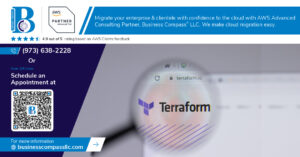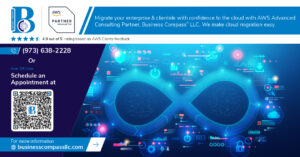Are you tired of your application’s performance hitting a wall? 🐌 Do you find yourself constantly juggling between read and write operations, desperately trying to optimize your database? If you’re nodding your head, you’re not alone. Many developers face this struggle, but there’s a powerful solution that’s been gaining traction: CQRS (Command Query Responsibility Segregation).
Imagine a world where your read and write operations are perfectly balanced, like a well-oiled machine. 🏎️ CQRS offers this tantalizing promise, splitting your application’s read and write operations to supercharge performance. But how does it work, and is it right for your project? In this blog post, we’ll dive deep into the world of CQRS, exploring its benefits, implementation strategies, and real-world applications. We’ll also tackle the challenges you might face along the way, ensuring you’re well-equipped to make the most of this game-changing architectural pattern.
Get ready to revolutionize your application’s performance as we unpack CQRS, from understanding its core concepts to seeing it in action. Whether you’re a seasoned architect or a curious developer, this guide will help you navigate the exciting landscape of Command Query Responsibility Segregation. Let’s embark on this journey to unlock the full potential of your applications! 🚀
Understanding CQRS
Definition and core concepts
Command Query Responsibility Segregation (CQRS) is a design pattern that separates read and write operations in an application’s architecture. At its core, CQRS distinguishes between commands (which modify data) and queries (which retrieve data). This separation allows for optimized data models and processing for each type of operation.
Key concepts of CQRS include:
- Commands: Operations that change the state of the system
- Queries: Operations that retrieve data without modifying it
- Separate data models: Different structures for read and write operations
- Event sourcing: Often used in conjunction with CQRS to maintain a log of all changes
Separation of read and write operations
In CQRS, read and write operations are treated as distinct concerns:
-
Write operations (Commands):
- Handle data modifications
- Use a write-optimized data model
- Often involve complex business logic
-
Read operations (Queries):
- Retrieve data without modifications
- Use a read-optimized data model
- Focus on fast and efficient data retrieval
This separation allows for independent scaling and optimization of each side, leading to improved performance and flexibility.
Benefits of CQRS architecture
CQRS offers several advantages over traditional architectures:
- Improved performance: Optimized read and write models enhance overall system speed
- Scalability: Independent scaling of read and write sides based on specific needs
- Flexibility: Easier to adapt and evolve each side of the system separately
- Simplified queries: Read models can be denormalized for faster data retrieval
- Enhanced security: Finer-grained control over data access and modifications
Now that we’ve covered the fundamentals of CQRS, let’s explore how it contributes to improved performance in real-world applications.
How CQRS Improves Performance
Optimized read operations
CQRS significantly enhances read performance by separating the read model from the write model. This allows for:
- Denormalized data structures optimized for querying
- Caching mechanisms tailored for read-heavy workloads
- Simplified query logic without write-related complexities
By focusing solely on retrieval, read operations become faster and more efficient, leading to improved response times for user queries.
Scalable write operations
With CQRS, write operations benefit from:
- Dedicated resources for handling commands
- Ability to scale write infrastructure independently
- Optimized data structures for efficient updates
This separation enables systems to handle increased write loads without impacting read performance, crucial for high-traffic applications.
Reduced database contention
CQRS mitigates database contention by:
- Separating read and write traffic
- Allowing different database technologies for each model
- Minimizing locks and conflicts between read and write operations
This reduction in contention leads to improved overall system performance and responsiveness.
Flexibility in data storage
CQRS offers flexibility in choosing storage solutions:
- Write model: Can use traditional relational databases for ACID compliance
- Read model: Can leverage NoSQL or in-memory databases for faster queries
This flexibility allows organizations to select the most suitable storage technology for each model, optimizing both read and write operations.
Now that we’ve explored how CQRS improves performance, let’s dive into the practical aspects of implementing this pattern in your systems.
Implementing CQRS
Designing command and query models
When implementing CQRS, the first step is to design separate models for commands and queries. This separation allows for optimized data structures tailored to each operation type. Command models focus on write operations, while query models are optimized for read operations. Key considerations include:
- Command models: Simple and fast for data updates
- Query models: Denormalized for efficient data retrieval
- Domain-driven design principles for clear boundaries
Choosing appropriate data stores
Selecting the right data stores is crucial for CQRS success. Consider these options:
- Relational databases for command models
- NoSQL databases for query models
- In-memory caches for frequently accessed data
- Event stores for maintaining an audit trail
Handling data synchronization
Maintaining consistency between command and query models is essential. Implement robust synchronization mechanisms:
- Event-driven architecture for real-time updates
- Background processes for batch synchronization
- Eventual consistency patterns for scalability
Event sourcing integration
Integrating event sourcing with CQRS enhances traceability and flexibility. Key steps include:
- Capturing all changes as events
- Storing events in an append-only log
- Reconstructing system state from event history
- Leveraging events for both command and query models
With these implementation strategies in place, CQRS can significantly improve system performance and scalability. Next, we’ll explore real-world examples of CQRS in action to better understand its practical applications.
CQRS in Action
Real-world use cases
CQRS has proven its worth in various real-world scenarios, particularly in high-performance and scalable systems. Some notable use cases include:
- E-commerce platforms: Separating read and write operations allows for efficient handling of product catalog browsing and order processing.
- Financial systems: CQRS enables quick read access to account balances while ensuring accurate transaction processing.
- Social media applications: Handling millions of read requests for user profiles while managing fewer write operations for updates.
- IoT systems: Managing large volumes of sensor data reads while processing fewer control commands.
Performance benchmarks
Implementing CQRS can lead to significant performance improvements:
- Read operations: Up to 10x faster compared to traditional architectures
- Write operations: 2-3x improvement in throughput
- Overall system responsiveness: 30-50% reduction in average response times
These benchmarks demonstrate the potential of CQRS to enhance system performance, especially in read-heavy applications.
Scalability improvements
CQRS architecture allows for independent scaling of read and write components, resulting in:
- Horizontal scalability: Easily add more read replicas to handle increased traffic
- Optimized resource allocation: Allocate more resources to read or write operations based on demand
- Improved fault tolerance: Isolate failures in read or write models without affecting the entire system
Now that we’ve seen CQRS in action, let’s explore some challenges and considerations to keep in mind when implementing this architecture.
Challenges and Considerations
A. Increased complexity
Implementing CQRS introduces additional complexity to your system architecture. This complexity arises from:
- Separate read and write models
- Asynchronous communication between components
- Event sourcing (if used)
- Distributed systems challenges
While CQRS can offer significant benefits, it’s crucial to weigh these against the added complexity and potential impact on development and maintenance efforts.
B. Data consistency issues
One of the primary challenges in CQRS systems is maintaining data consistency between read and write models. Some key considerations include:
- Eventual consistency: Read models may lag behind write models
- Handling conflicts: Resolving discrepancies between models
- Data synchronization: Ensuring all models reflect the latest state
Strategies to mitigate these issues:
- Implement robust error handling and retry mechanisms
- Use versioning to track data changes
- Implement compensating transactions for conflict resolution
C. Development and maintenance overhead
CQRS systems require additional effort in development and maintenance:
- Separate codebases for read and write models
- More complex testing scenarios
- Increased monitoring and logging requirements
- Potential need for specialized skills in distributed systems
To manage this overhead:
- Invest in proper documentation
- Implement automated testing and deployment pipelines
- Use monitoring tools designed for distributed systems
D. When to use CQRS
CQRS is not a one-size-fits-all solution. It’s most beneficial in scenarios with:
- High read-to-write ratios
- Complex domain models
- Need for scalability and performance optimization
- Requirement for real-time analytics or reporting
Consider CQRS when the benefits outweigh the added complexity and overhead.
E. Alternatives to consider
Before committing to CQRS, explore these alternatives:
- Traditional CRUD architecture with caching
- Event-driven architecture without full CQRS implementation
- Microservices with domain-driven design
- Read replicas for database scaling
Evaluate these options based on your specific requirements, team expertise, and system constraints. Remember, CQRS is a powerful pattern but should be applied judiciously to avoid unnecessary complexity in simpler systems.
CQRS (Command Query Responsibility Segregation) offers a powerful approach to improve application performance by separating read and write operations. By implementing CQRS, developers can optimize their systems for specific workloads, scale read and write operations independently, and enhance overall system responsiveness. The pattern’s flexibility allows for tailored implementations that suit various application requirements.
While CQRS brings significant benefits, it’s crucial to carefully consider its implementation. Developers should assess their application’s needs, evaluate the potential complexity introduced by CQRS, and plan for data consistency challenges. By understanding these considerations and leveraging CQRS effectively, teams can create more efficient, scalable, and performant applications that meet the demands of modern software systems.



















